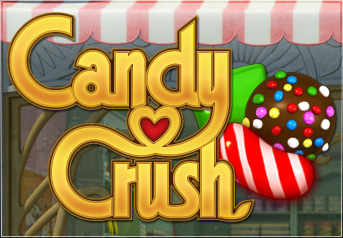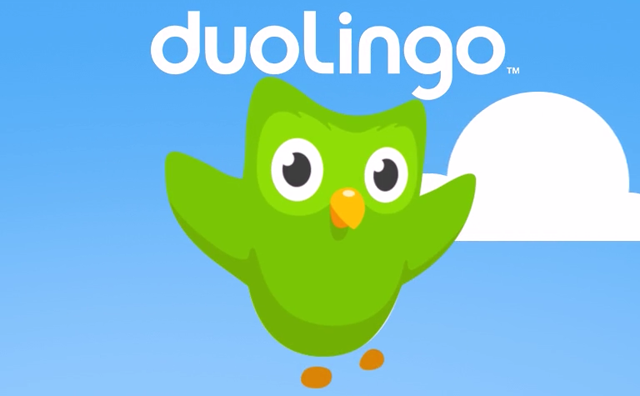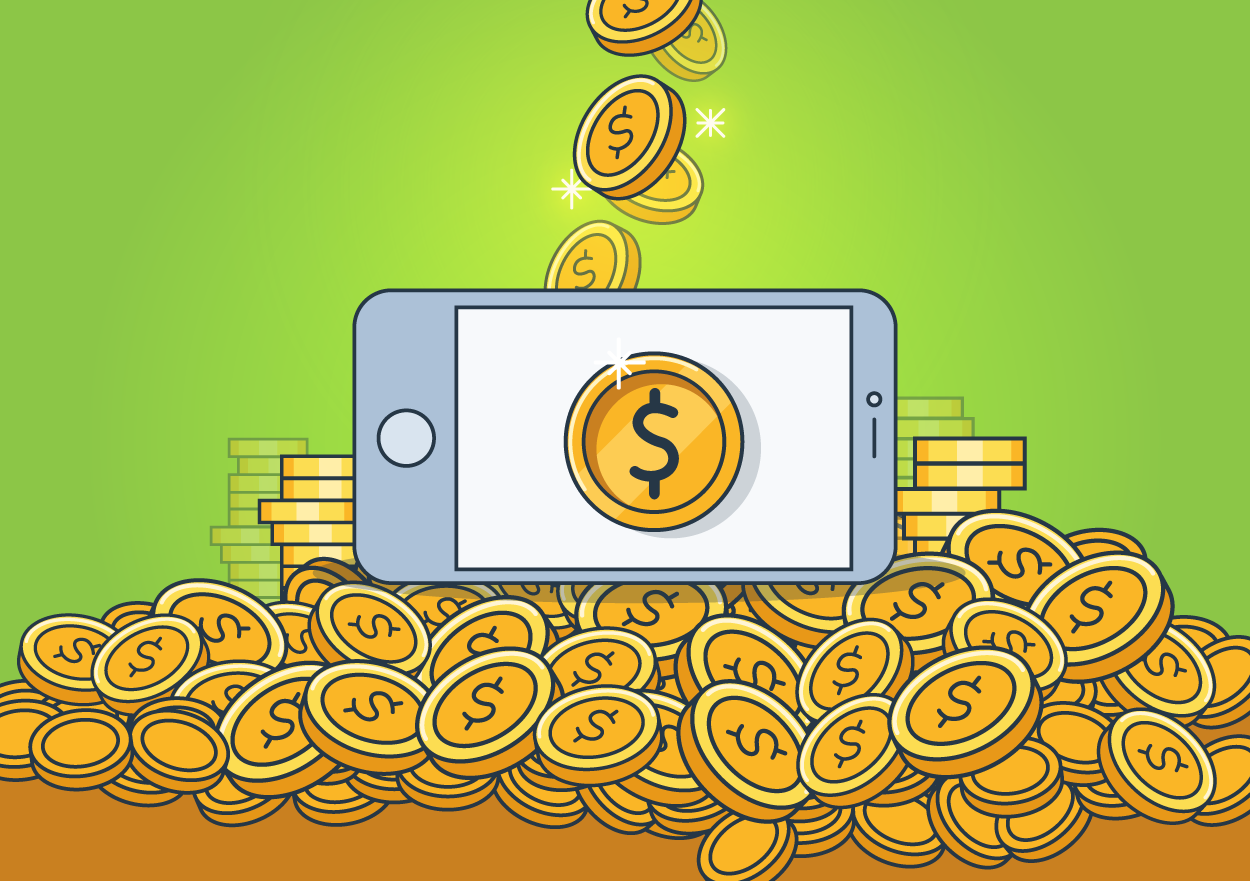The Ultimate Guide To Making BIG Money From Mobile Apps
You’re reading Part 4 of the Buzinga crash course How To Build An App: Moving Forward With Your App Idea
Go to Part 1: The Startup’s Guide To Measuring Market Size For An App Idea
Go to Part 2: 5 Tips For Validating Your App Idea
Go to Part 3: How To Perform Competitive Analysis On Apps
Go To Part 5: The 20 Minute, 1 Page Business Plan For Lean Startups
When was the last time you paid for an app?
As in, you went to the app store and paid $0.99 to install an app that you’ve never even been given a chance to use before, and yet you handed over the money in blind faith.
If you’re scratching your head trying to remember, you’re not alone. PAY-TO-DOWNLOAD APPS ARE DEAD.
Customers don’t want to pay for apps before they use them, and they have zero tolerance for monetisation methods that disrupt the user experience once they’re inside the app.
Pretty tough ask to please the consumer these days, isn’t it?
The good news is that there is so much choice available to app developers in 2015 to not only choose ‘off the shelf’ monetisation models (more on that later) but also blend and adapt monetisation models to craft their perfect stream of revenue.
I’ve compiled the latest trends and insights into how developers are making BIG money from mobile apps in 2016.
In this guide we’ll cover:
- The pros and cons of the 5 most popular monetisation models big money apps are using today
- How to calculate potential ad revenue from mobile ads
- Creative, non-traditional monetisation models being used by Duolingo and Snapchat
- How do you choose an app monetisation model? 6 questions you need to answer
- How to blend multiple app monetisation models to craft your perfect stream of revenue
Let’s get started so you can make some money from your app!
-
Freemium – LinkedIn, Spotify, Evernote
In a nutshell: Free but with locked features customers can choose to pay for if they wish
Freemium is becoming increasingly popular as it is so easily adapted to any app vertical, including media, utilities and social apps.
Offering limited time trials of freemium services is a great way to get people through the door and wanting to upgrade to the paid accounts.
Pros
- Users who try before they buy are more likely to become engaged and buy down the track – Usually when they find they can’t live without your app!
- Allows you to develop a large user base with the view of up-selling at the right time in their customer life cycle.
Cons
- If you don’t offer enough features for free, your users may drop off
- If you offer too many features for free, no one will want to upgrade
2. Subscription – Whatsapp, Apple Music, Netflix
In a nutshell: Free but with locked content customers typically must pay for to get any value from the application.
The revenue stream comes from the user paying the same amount of money weekly, monthly or annually to access exclusive content.
The subscription price is usually smaller than the one-time price to incentivise the user into a longer term commitment.
Pros
- Results in a constant, repeated revenue stream
- Forces you to continually deliver fresh, high quality content to retain your users
- Leads to loyal and engaged app users
Cons
- Doesn’t easily translate to all app verticals – More suited to service apps.
- It can be hard to determine just how much content to provide for free and when to start charging
- Subscription requires a massive committment from a first time user, as subscriptions have a reputation for being hard to cancel.
An initial free or discounted trial is therefore almost a prerequisite for onboarding new users.
3. Sponsorship – Runkeeper, Menulog, Pinterest
In a nutshell: Sponsorship involves offering advertising space within your app to brands who will offer your users exclusive content or discounts.
Sponsorship is one of newest and hardest monetisation methods to execute but is definitely one of the most effective. Pros
- The ultimate Win-Win-Win scenario:
The developer wins by getting money from the sponsor, the sponsor wins by getting in front of potential new customers, and the customer wins because they are exposed to exclusive discounts and offers from brands of interest to them.
- Minimal disruption to user experience
- Model can be easily tailored to every app vertical and industry
Cons
- It’s a relatively new model that hasn’t been as thoroughly tested as other options
- Your app needs to have a strong brand behind it as well as sophisticated data on your users if you are to convince sponsors that your users are valuable to their business specifically.
4. In-app purchases – Candy Crush, Tinder, Snapchat
 In a nutshell: Users can choose to buy virtual or physical goods from within your app.
In a nutshell: Users can choose to buy virtual or physical goods from within your app.
Your immediate thought when I say in-app purchases might be games where you can buy extra credits and lives, or retail apps where you purchase actual goods through a checkout process.
BUT if your app doesn’t fit this bill, don’t rule it out too soon!
Every app can offer some kind of extra functionality, tools, enhanced features and deeper content.
Stuck for ideas?
A great place to start brainstorming monetisation opportunities is to look at your reviews, user feedback and analytics.
This is how Snapchat got the idea that another revenue stream could come through the small % of users who would want to replay a snap more than once ($0.99).
Tinder, similarly, noted that users were complaining about accidentally swiping left on a potential soul mate, so are now testing the effectiveness of allowing users to take back their mistake for $0.99.
Pros
- There is minimal risk in implementing this model.
- Works well with certain app verticals (games and retail apps especially)
- Buying virtual goods typically leads to greater user engagement and longer session times.
Cons
- The app stores will take 30% of the profits from in-app products
- Users may be less inclined to download your app if they see that it includes in-app downloads
5. In-app advertising – Facebook, Google, Youtube
In a nutshell: Free but with advertising within the app
Pros
- Works well if your app is a new concept to the market.
By accumulating a large user base and gathering profile data on your users before rolling out any paid ads, you can auction off space on your app to advertisers who want to get in front of your users. Bonus: Growth Hack: How Pinterest Soared To A $3.8B Valuation Without Making A Cent
- Can be very effective if minimal and targeted advertising is used.
Cons
- Generates quite small revenue per user
Paid ads go for big scale over high margins. According to Monetize Pros, most developers will only generate $1.50 per thousand impressions of their ads.
So, this model is best suited to apps that have a huge userbase and are used frequently. If your app is quite niche and you don’t think you will honestly get tens of millions of users, you’ll get a lot richer by picking a monetisation model that earns higher revenue per user.
- Reputation for being annoying and disruptive to the user experience
Bonus: How To NOT Annoy Users With Mobile App Advertising
- Feels unnatural in certain kinds of apps, such as utility apps that help users perform specific actions. (Think banking apps or city transport apps).
How to calculate potential ad revenue from mobile ads
The way that the revenue-gain is calculated is based on any of the following formulas (depending on the ad network and the advertiser):
CPI: install x ($-value per install, as set by advertiser) = revenue
Cost per install (you get paid for every time someone installs the app that’s being advertised after clicking on an ad in your app – provided that an app IS being advertised)
CPM: (1000 x impressions*) x ($-value per 1000 impressions, as set by advertiser) = revenue
Cost per thousand impressions
CPC: (1 x user-taps-on-ad) x ($-value per 1000 impressions, as set by advertiser) = revenue
Cost per click, also known as PPC – Pay-per-click
*Impressions is the number of times the ad has been seen. One impression means the ad has been seen one time.
I’ve left the $-value open-ended because it varies from advertiser to advertiser and can be anything…literally. Anywhere from $0.10 to $34.00 or more.
Offbeat monetisation models
 These 5 monetisation models are the most popular categories dominating the app store today, but there are in fact dozens of options out there and no limits on how you can make money from an engaging application.
These 5 monetisation models are the most popular categories dominating the app store today, but there are in fact dozens of options out there and no limits on how you can make money from an engaging application.
For example, Duolingo, the language study app, earns revenue by crowd-sourcing pieces of translation done by its students and selling them to companies like CNN and BuzzFeed for their international websites.
Weird, huh?
Tinder also got some extra cash a few years ago when Gillette paid for access to their user data for one of their marketing campaigns.
Gilette managed to prove that men without facial hair got more ‘swipe rights’ than men with facial hair, who obviously didn’t shave.
Check out App Flood’s epic list of 40 iOS and Android monetisation models for further inspiration.
Whitelabelling
Will other businesses, industries or apps benefit from this platform’s core functioning?
Could they apply it to their own processes to achieve greater efficiencies or customer satisfaction?
If yes, you can ‘whitelabel’ your app and sell the code that the app is built on. This way, external parties can buy your app’s functioning at its core and apply their own branding to it.
How to choose an app monetisation model: 6 Key Questions
 Ask yourself each of these 6 questions to figure out which monetisation model will best fit your app’s function and customers.
Ask yourself each of these 6 questions to figure out which monetisation model will best fit your app’s function and customers.
- What is your user’s overall goal during an app session? How will each monetisation model impact them achieving that goal?
2. What vertical or industry is your app in and how would user experience be compromised as a result of each of the 5 monetisation models?
3. Is there a single moment in your app in which users experience discomfort or happiness?
By exploring your analytics, you may find that there is an ideal time in a user’s session when you can prompt them to engage in your monetisation stimuli, either to relieve their pain or to take advantage of their curiosity.
Monitor your drop-off points to identify when you could prompt users with a well timed freemium ad or in-app purchase.
This might manifest itself as premium content, cheats, hints or watching a 30 second video for a certain kind of credit.
Bonus: 6 Reasons Why Customers Are Leaving Your App
4. What type of ad will geniunely be most helpful to users?
Flip your thinking for a minute away from defence mode – how you can sneakily roll out a monetisation model that users won’t notice too much.
Approach it from the completely different angle entirely and think about you user’s needs, goals and desires.
How could a monetisation model actually offer them more value?
What kind of advertising, extra features, or brand sponsors would your users enjoy being exposed to, because it helps them achieve their goals faster or more effectively?
Remember: People don’t actually hate advertising. They just hate BAD advertising.
5. What monetisation models do your competitors use?
Get potential insights by analysing your competitors to see what aspects of their models work well, and where they could be improved.
Bonus: How To Perform Competitive Analysis On Apps
6. Are there any potential partnerships you can leverage? Are there any brands or other apps who would find your audience valuable for their business?
How to blend monetisation models
If you can identify multiple possible revenue streams within your app, why not go for gold?
All these monetisation methods are not mutually exclusive.
It’s now becoming the norm for apps to mix and match models in order to tailor content and offers to their audiences.
Snapchat, for example, uses a combination of sponsorship through its discovery tab in stories, as well as in-app purchases like special effects and additional snap replays.
Ultimately the best mobile app monetisation model for your app will be one that suits your app’s industry, its core function and customer behaviours.
Nail these down and you’ll have a money making app on your hands in no time.
What other apps do you know that blend monetisation methods? Let me know in the comments!
You’re not done yet! Continue the crash course for moving forward with your app idea…
Go back to Part 1: The Startup’s Guide To Measuring Market Size For An App Idea
Go back to Part 2: 5 Tips For Validating Your App Idea
Go back to Part 3: How To Perform Competitive Analysis On Apps
Go to Part 5: The 20 Minute, 1 Page Business Plan For Lean Startups
Latest posts by Logan Merrick (see all)
- Ep 18: Collective Campus’ CEO on Intrapreneurship and Corporate Innovation - December 20, 2016
- 50 User Engagement Strategies For Planning Memorable Mobile Experiences - December 19, 2016
- Latest Data: App Monetisation Trends And Drivers 2015-2020 - November 25, 2016








